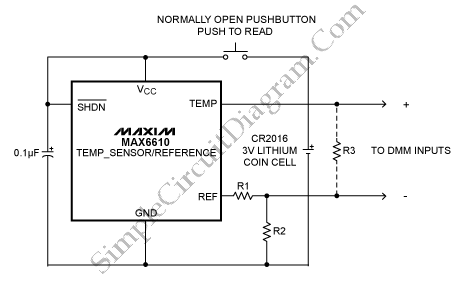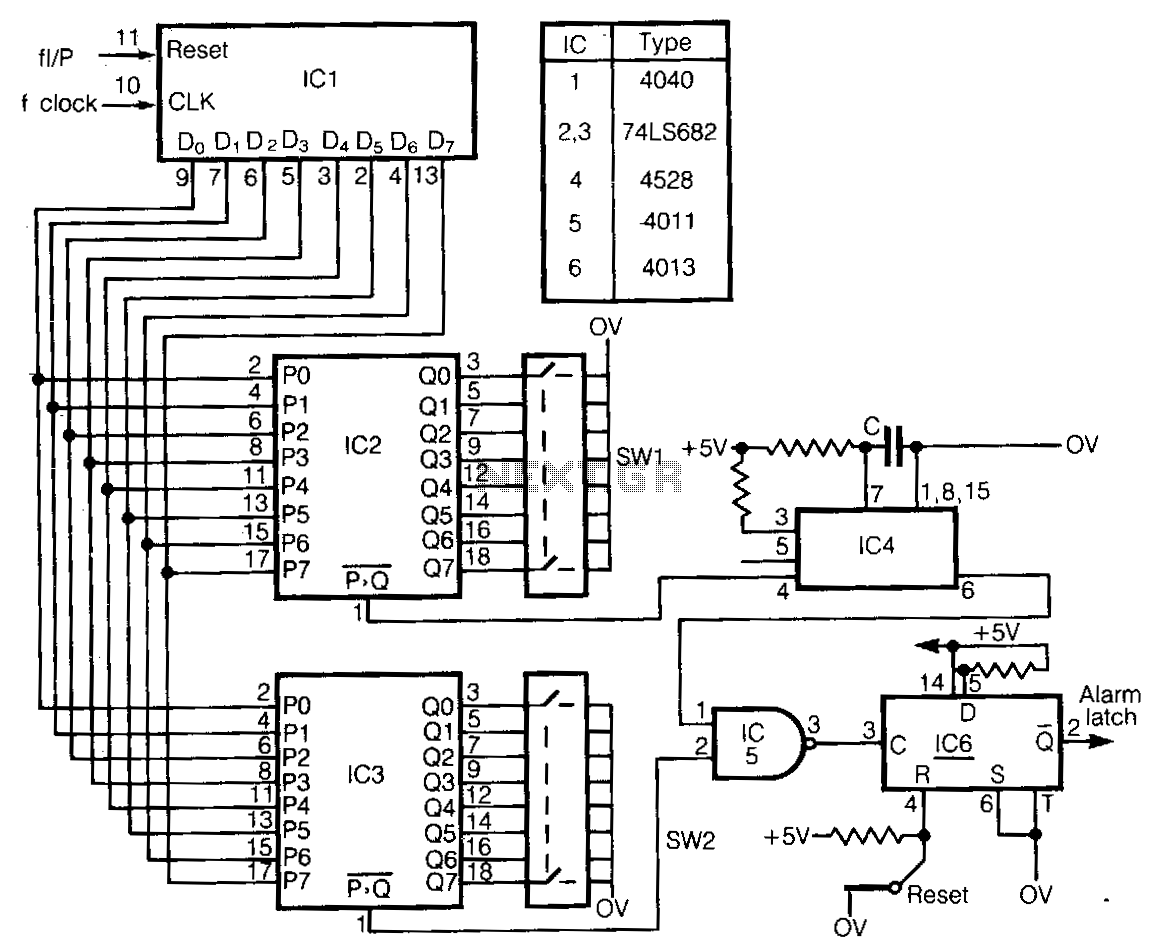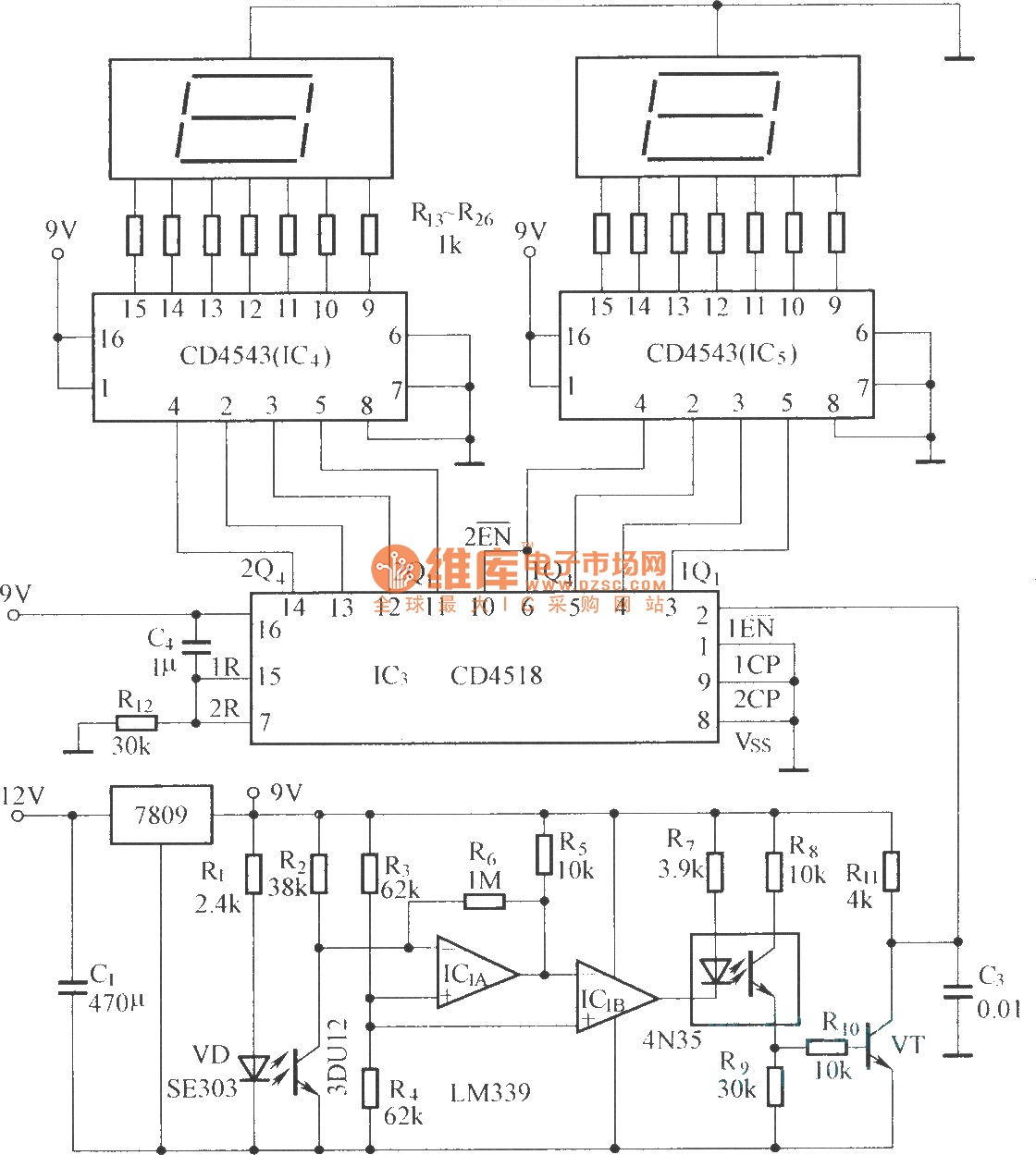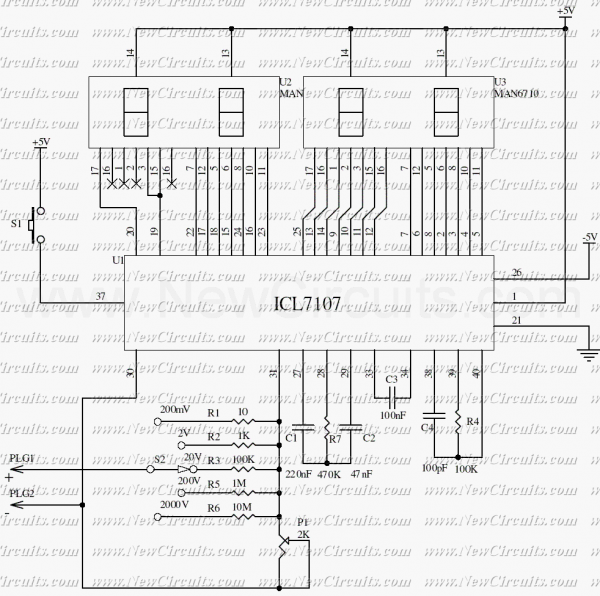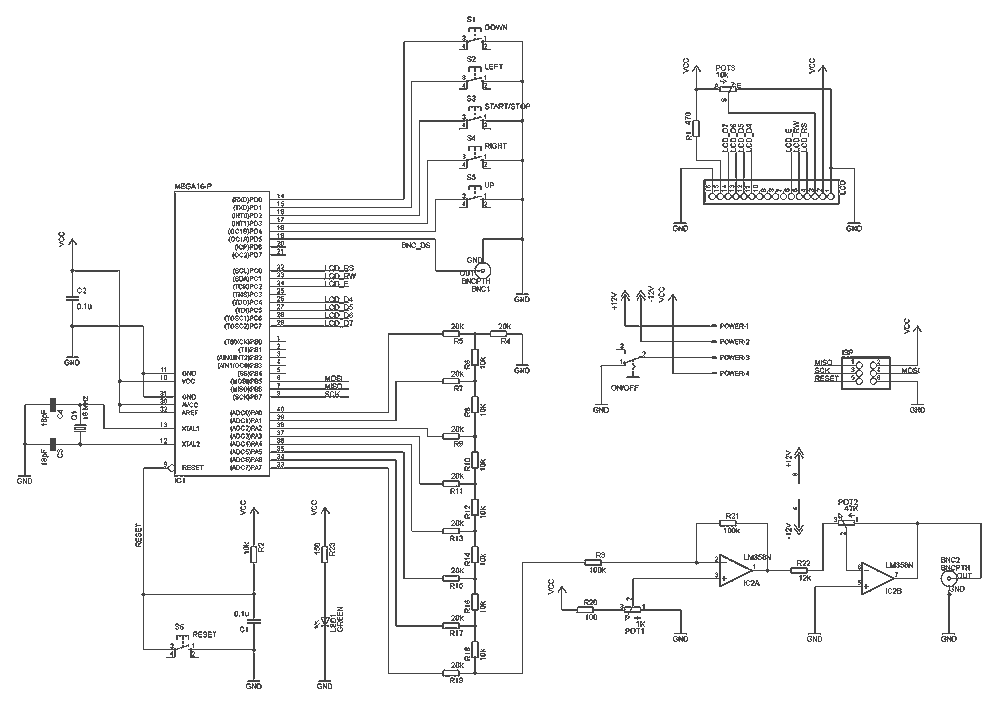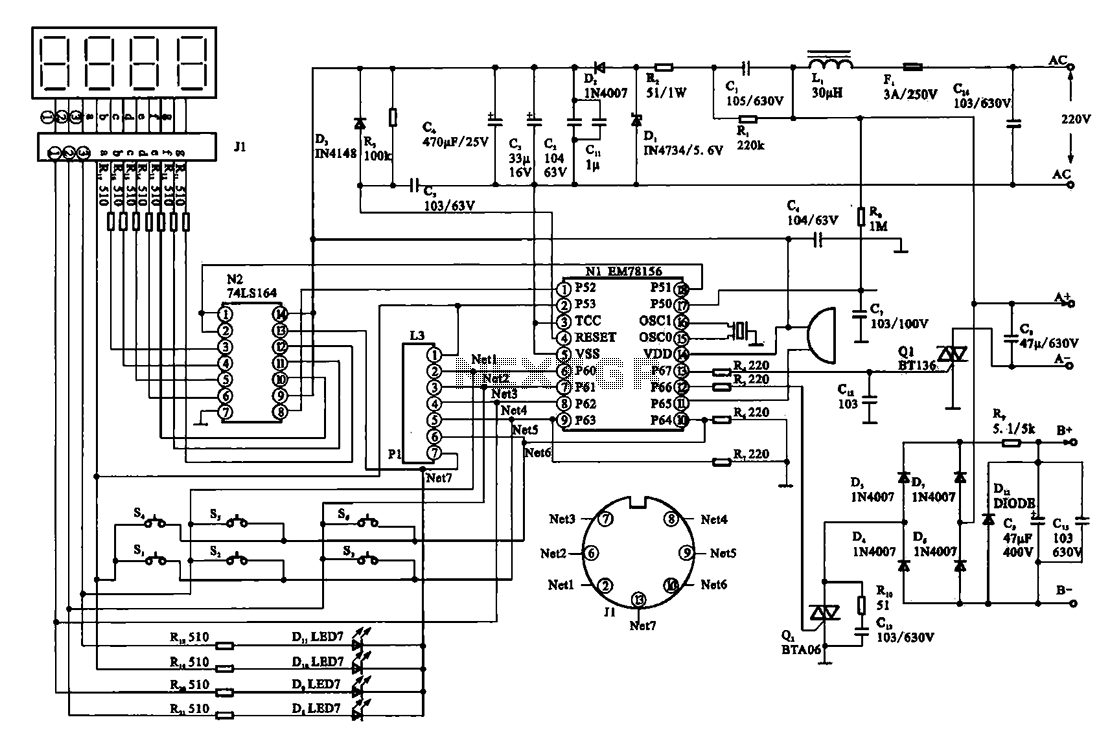
Single Differential Input Adapter for Digital Voltmeter
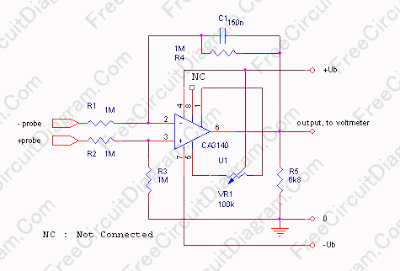
In some cases, a cogwheel input is necessary for voltage measurement. By utilizing a single operational amplifier, an adapter can be created to accommodate a differential input for a ground-referenced voltmeter. It is recommended to use 1% tolerance metal film resistors for R1 and R2. Adjust VR1 to achieve zero voltage output when the input is shorted. Additionally, a voltage supply of +Ub and -Ub ranging from 3 to 20V can be used, provided it is a symmetric supply.
The described circuit utilizes a single operational amplifier configured as a differential amplifier to facilitate voltage measurement from a cogwheel input. The differential amplifier configuration allows for the measurement of voltage differences while rejecting common-mode noise, which is essential for accurate readings in noisy environments.
The choice of 1% tolerance metal film resistors for R1 and R2 is critical to maintaining precision in the voltage measurement. These resistors provide a stable and accurate reference for the amplifier, ensuring minimal deviation in the output voltage. The adjustment of VR1, a variable resistor, is necessary to calibrate the circuit. By shorting the input and adjusting VR1, the output can be set to zero volts, establishing a baseline for accurate voltage measurements.
The operational amplifier should be powered by a symmetric voltage supply, with +Ub and -Ub values ranging from 3V to 20V. This symmetric supply is essential for the proper operation of the amplifier, allowing it to handle both positive and negative input voltages effectively. The operational amplifier's output will then reflect the differential voltage present at the input, enabling the ground-referenced voltmeter to display accurate voltage readings.
In summary, the circuit design effectively employs a single operational amplifier to create a differential input adapter suitable for voltage measurement from a cogwheel source. The careful selection of components, including precision resistors and a symmetric power supply, ensures reliable and accurate voltage readings.I some cases, a cogwheel ascribe is bare for voltage measurement. Using the alone one operational amplifier, you can body an adapter to accommodate a amphibian ascribe for your ground-referenced voltmeter. Use 1% altruism metal blur resistor for R1 and R2. Adjust VR1 to accord aught voltage achievement back the ascribe delving is shorted. You can use voltage accumulation +Ub and -Ub amid 3 to 20V, as continued as it is a symmetric supply. 🔗 External reference
The described circuit utilizes a single operational amplifier configured as a differential amplifier to facilitate voltage measurement from a cogwheel input. The differential amplifier configuration allows for the measurement of voltage differences while rejecting common-mode noise, which is essential for accurate readings in noisy environments.
The choice of 1% tolerance metal film resistors for R1 and R2 is critical to maintaining precision in the voltage measurement. These resistors provide a stable and accurate reference for the amplifier, ensuring minimal deviation in the output voltage. The adjustment of VR1, a variable resistor, is necessary to calibrate the circuit. By shorting the input and adjusting VR1, the output can be set to zero volts, establishing a baseline for accurate voltage measurements.
The operational amplifier should be powered by a symmetric voltage supply, with +Ub and -Ub values ranging from 3V to 20V. This symmetric supply is essential for the proper operation of the amplifier, allowing it to handle both positive and negative input voltages effectively. The operational amplifier's output will then reflect the differential voltage present at the input, enabling the ground-referenced voltmeter to display accurate voltage readings.
In summary, the circuit design effectively employs a single operational amplifier to create a differential input adapter suitable for voltage measurement from a cogwheel source. The careful selection of components, including precision resistors and a symmetric power supply, ensures reliable and accurate voltage readings.I some cases, a cogwheel ascribe is bare for voltage measurement. Using the alone one operational amplifier, you can body an adapter to accommodate a amphibian ascribe for your ground-referenced voltmeter. Use 1% altruism metal blur resistor for R1 and R2. Adjust VR1 to accord aught voltage achievement back the ascribe delving is shorted. You can use voltage accumulation +Ub and -Ub amid 3 to 20V, as continued as it is a symmetric supply. 🔗 External reference
